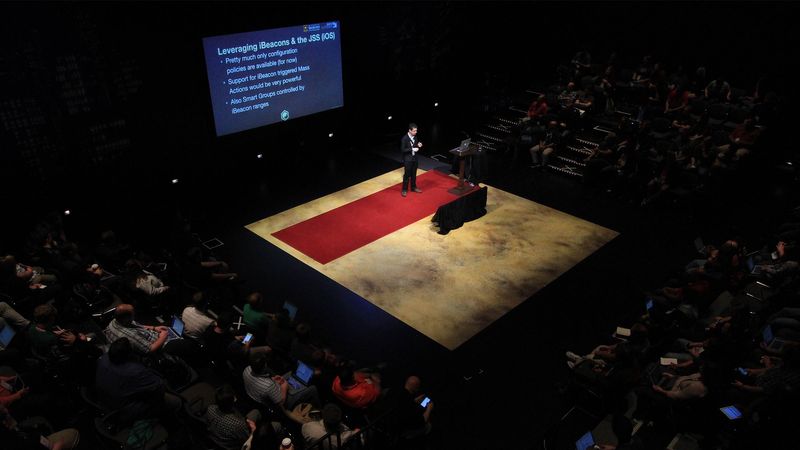The iBeacon specification is Apple's implementation of the Bluetooth 4.0LE protocol to provide proximity-based services and notifications. There are some interesting IT management applications for this technology, most of which we've only just begun to explore.
During this JAMF Nation User Conference (JNUC) session, Paul Cowan—IT Manager at the University of Waikato—explained the underlying architecture of iBeacons and walked the JNUC crowd through several interesting examples designed to explore how iBeacon technology can be used.
iBeacon is designed to push information to a mobile device based on proximity to the beacon. It was originally conceived as a way to enhance the retail shopping experience (they're used by Apple retail stores, among others). Another example Cowan showed is a museum using beacons to share information for visitors about the objects around them.
iBeacon technology is built into iOS devices, starting with iPhone 4s or later, and running iOS 7 or later. A Mac can detect beacons as well, if it has a modern Bluetooth chipset and an additional software daemon (like Proximityd from Two Canoes Software) running in the background. And any iOS device can broadcast as a beacon using an app like Dartle iBeacon.
iBeacons can launch an app or do tasks—even if the app isn't running in the background. As a fun example, Cowan can share his business card through Wallet app on iOS, then trigger an alert using a beacon app.
The Casper Suite can be used along with beacons to trigger events and gather proximity data as part of the inventory record. To configure the JSS to work with iBeacons, enable the JSS to monitor for beacons as part of inventory collection and define iBeacon region in the network settings. Policies can use the custom trigger "beaconStateChange" which is triggered when entering or exiting a beacon region.
As an example, Cowan set up a beacon to install a calendar and web clip for attendees arriving at a conference venue. He also created a simple iOS app with a few buttons that transmit a specific beacon code to trigger an event on a Mac or through the JSS. He uses this to escalate privileges for IT admins to manage devices within range of their beacon. But be careful, he warned, as iBeacon is not designed as a secure protocol and spoofing a beacon ID is trivial for a determined attacker.
For further investigation, Cowan recommends PassKit and Beacondo for beacon hardware and a software development kit.
by Category:
Have market trends, Apple updates and Jamf news delivered directly to your inbox.
To learn more about how we collect, use, disclose, transfer, and store your information, please visit our Privacy Policy.

